
Бесплатный фрагмент - Run and remember. Marathon des Sables
Preface
By the age of 38, I had everything that any normal male dreams about: a beloved wife, two children, a successful, growing business (100 employees), many friends, an apartment in the center of the city, a car, a beer tummy, and, as one of my acquaintances said, I was not the last person in the city. I had already realized my financial, creative, managerial, and social ambitions, but, instead of a feeling of victory and pride, there was some emptiness inside of me.
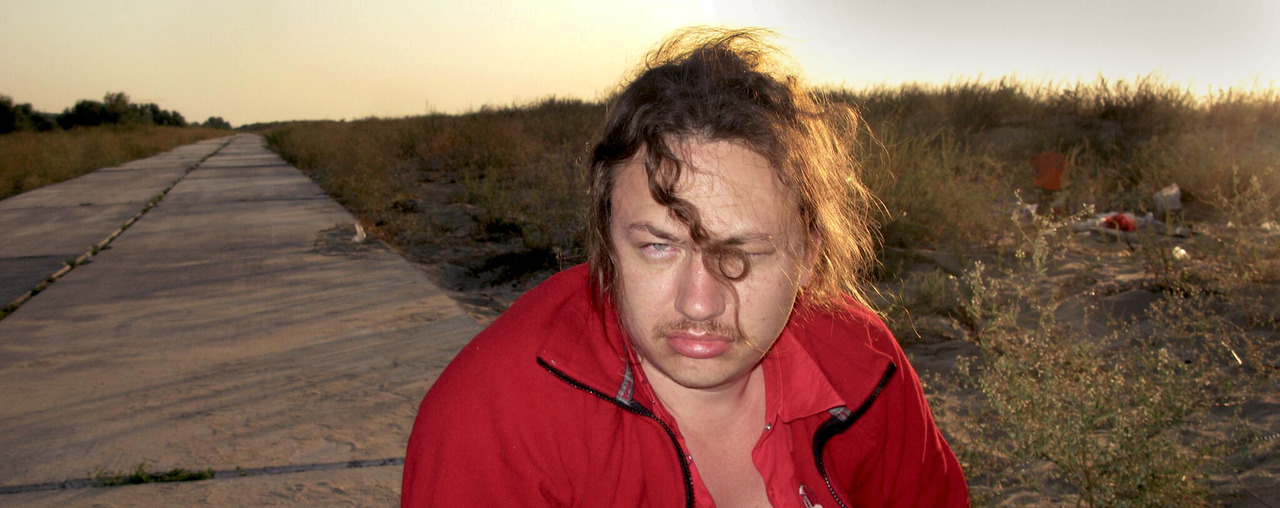
As far back as I can remember, I was fighting. First, for survival in a strange city, and then there was Simpals, where I spent many evenings and weekends at work to make it survive and become a prosperous company. Then there were cartoons and I devoted myself entirely to my work to win contests at 40 festivals all over the world. And, in the meantime, I was fighting for the happiness of my family because my woman could hardly stand my difficult personality and every few months she packed her suitcases with the firm intention of finally becoming happy…
Now that the storms had calmed, I didn’t know what to do next.
It was already uninteresting in chasing money, the animation studio was working on its own, hard drinking with friends was no longer pleasing, and my relationship with my beloved woman had hit a dead end. In addition, I was tormented by the hypertension inherited from my father.
I was sitting and thinking that my life, boring and uninteresting to anyone, had turned into a slow dying of my aching body and lazy spirit. This had been going on for six months already. There were no thoughts of how to save myself, or how to change my life so that my eyes lit up and I was full of spirits again.
My reflections were interrupted by a bouncing Skype icon.
Sighing, I opened the message:
c.sevciuc
https://www.trilife.ru/reports/report.php?id=2247
you need to learn to swim, run and ride a bike
I indifferently clicked on the link, not knowing that this click would divide my life into two halves. It was an Ironman race report. After reading it, I was taken aback. I read it again. Still not realizing that I was infected with no chance for recovery, I began to passionately read the reports of “ironman”. Ordinary men, there were guys like me who could swim 4 kilometers without stopping, bike 180 km and run 42 km “for dessert”.
That night I didn’t come home, and in the morning, with red eyes, I couldn’t think of anything else except that I urgently needed sneakers. That’s how it all began. Five years have passed since that day and I’m no longer that sad fat man with hypertension and fireless eyes. My life has completely changed.
I ran dozens of marathons, crossed deserts and frozen lakes, climbed mountains, swam across rivers, straits, and canals, dived to depths, held my breath, participated in Swimrun, Triathlon races, and world championships. I became an ironman. It was difficult, but I managed to inspire a love of sports in dozens of my friends and acquaintances who, in turn, had hundreds of their close ones hooked too. My Sporter team and I organized the Chisinau International Marathon and dozens more sports events.
Hundreds of hours of training alone with myself, similar to meditation, have greatly changed me. I became calmer and more confident, I learned to hear my body and to be here and now. This immediately influenced my family relationship and now my wife and I are closer than ever, although she sometimes get annoyed by my constant sports activity.
My life, of course, hasn’t become ideal. It has turned into a fight. I get the greatest satisfaction when after another madness I come back home with my shield, or on it (it doesn’t really matter), embrace my loved ones, I lay on the couch with them and allow myself everything that comes to my mind. I eat and drink whatever I want, I forget about work, I hang out with my children, my beloved wife, and my friends. Only at these moments do I enjoy life.
But after some time, it sucks. I feel uncomfortable because of idleness and inaction, and here I am, planning the next adventure and starting to train. Again a tough regime, diet, restrictions in everything, and only one goal is ahead — to run across Baikal, climb Mont Blanc, become an Ironman, swim across Gibraltar, hold my breath for seven minutes, and so on, and so on, and so on…
I feel uncomfortable in my comfort zone. For me it’s like a short break between two fights. I don’t know why but God has created me in such a way that I feel happy only when I take great pains to pursue my goals. I don’t know how I called down the wrath of God in past lives, but in this one I have to roll my stone up the mountain to the very end…
However, the main thing that gives me the strength to move on is the belief that someone very tired of life will late at night accidentally bump into one of my reports and his life will change.
Marathon Des Sables
When you begin running, you never know where this “bad” habit will lead you. You cannot even imagine it.
Four years ago, after my first training where I heroically ran two kilometers, I felt like a typical white-collar worker: fat, breathless, and mad, with pain in my knees. My greatest sports achievement at that time was a descent from a water slide in Turkey. If anyone had told me back then that only four years later I would go to the Sahara Desert and run 250 kilometers on the sand with a full backpack, I wouldn’t have believed it!
But time goes by, your first training is followed by the second, the tenth one… Then you run five, ten kilometers, a half marathon, a marathon], “Half Ironman”, “Ironman”, “Comrades”, “Otillo”, “Rubicon”. This unfinished list is familiar to many racing lovers. And when you see an ellipsis at the end of the list, you understand that you were right four years ago. Because the list continues with the Great and Terrible…
Marathon des Sables (MDS, Marathon of Sands). It is a 250-kilometer, six-day ultramarathon through the Sahara Desert. The MDS is considered one of the world’s toughest endurance contests.
That is why it attracts the attention of hundreds of madmen every year.
Marathon des Sables was invented by the French concert promoter Patrick Bauer. In 1984, he traversed the Sahara Desert alone, covering 350 kilometers in twelve days.
The first official launch of the Marathon des Sables took place in 1986 in Morocco. Then, just twenty-three participants finished the race. In 2017, about 1,300 people toed the starting line, provided that there are quotas for different countries. Moldova is participating in this outrage for the first time, and it seems to me that our quota will not be exhausted soon. Here are just some of the joys awaiting the participants of this adventure:
— The air temperature reaches +50°C in the daytime and drops to +5°C at night;
— Strong winds blow and sand storms may arise in the desert;
— Participants must carry all personal items and food with them in a backpack that weighs about 12—13 kilograms;
— The race passes through sand dunes and stony terrain with long, rocky climbs and descents;
— During the day one participant is given only 12 liters of water;
— Almost all runners’ feet bleed because of the heat, sweat, and sand.
Isn’t it lovely?
How can you not want ALL THESE JOYS?
Many people believe that only superhumans or suicidals, as well as those who don’t have enough thrills in their lives run the Sahara marathon. I believe that it’s first of all a challenge to your idea of normality. If you think the goal is unattainable, you’re not likely to achieve it. If you believe in yourself, then crawl. Being a superhuman has nothing to do with it.
However, for me, until I experienced the MDS, all that was just theoretical. For me, it had to be proven.
The Italian Mauro Prosperi knows better than anyone how hard this race is. In 1994, he got lost because of a sandstorm and was found in Algeria nine days later. He lost 13 kilograms but survived thanks to an unusual diet that included dead bats!
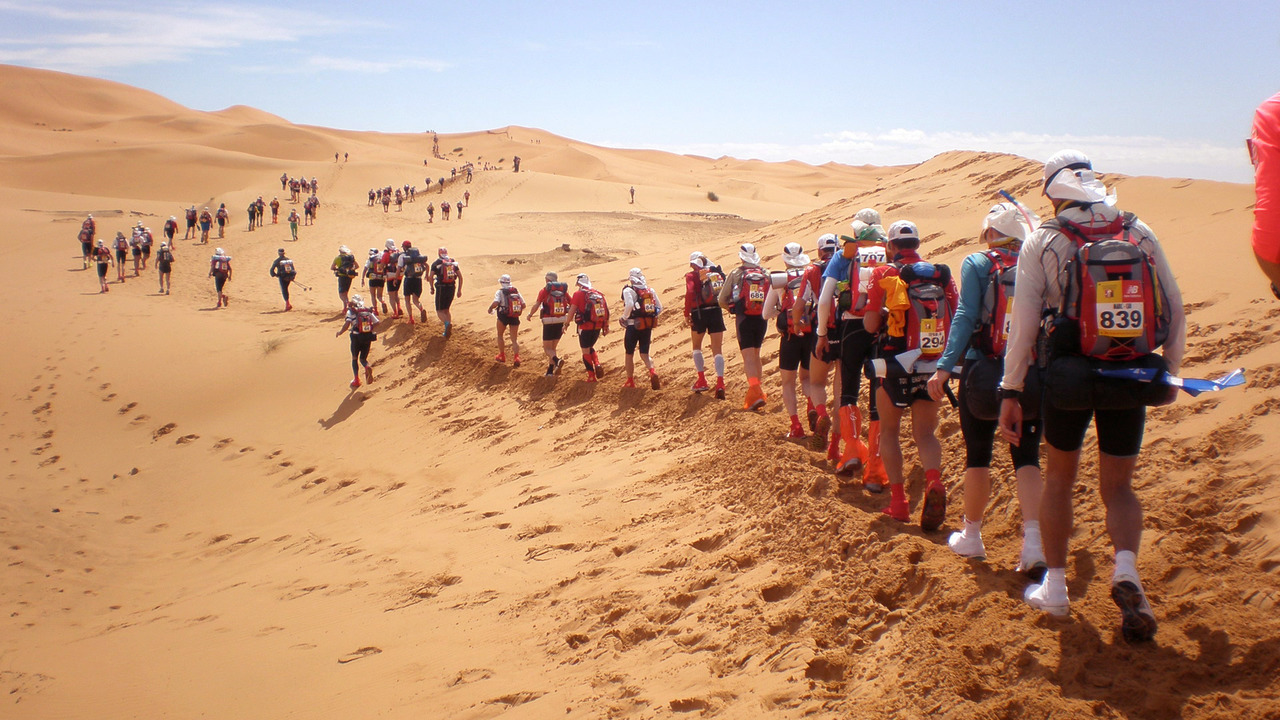
Preparation for the MDS. Training
Well, it’s no joking matter, this challenge requires serious preparation. It took more than a half a year to prepare for the race. Though I already had some experience, I had to start a lot from scratch.
First of all, big distances. I had to learn to run a lot, about 70—80 kilometers per week. I ran about 1,500 kilometers during the entire preparatory period. Probably, this is a beginner’s level for many ultra-runners but it took me three months to teach my brain and legs to cope with such a workload.
Then there was a struggle with my backpack. It’s one thing to run light and it’s quite another with a seven-kilogram weight behind your back. In the beginning, I had back pain, but regular training, special running exercises, general physical preparation, and kinesitherapy gave the result, and now my scoliosis doesn’t bother me so much.
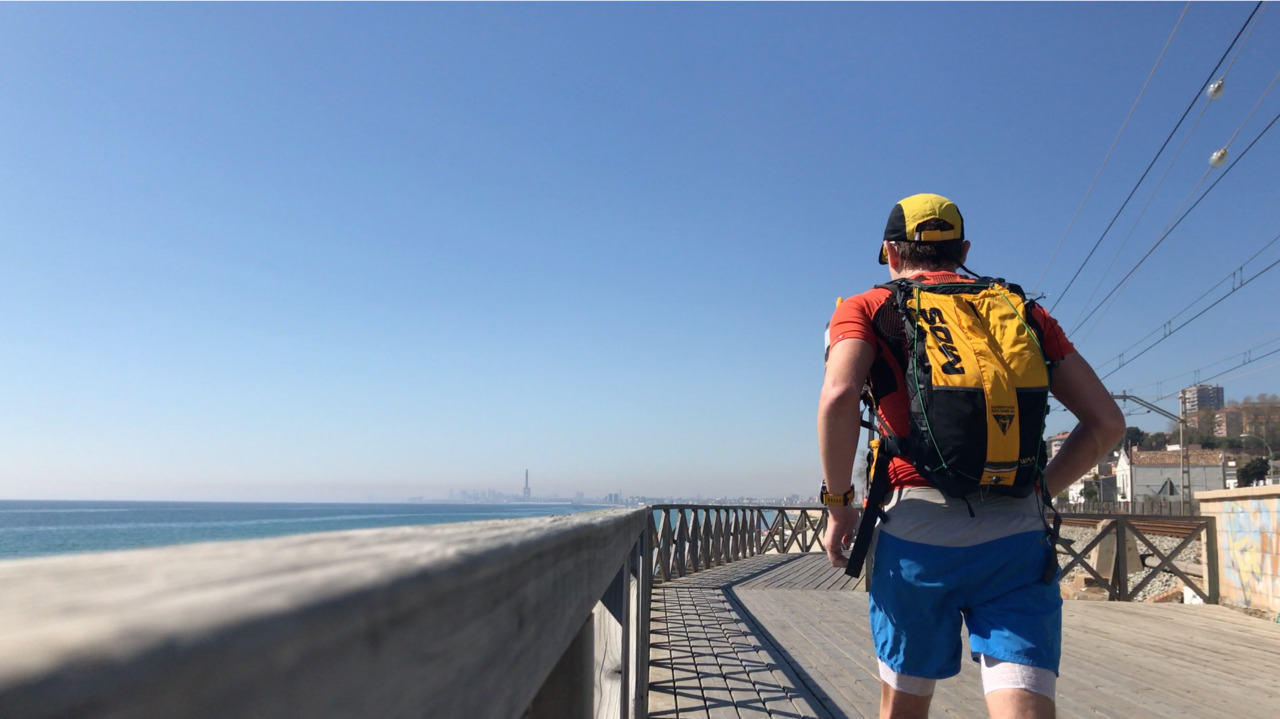
Speed. I had to learn to run slowly. It’s not as easy as it sounds. Slowly means for a long time, and for a long time means hard.
Slow running differs from fast in biomechanics, so I had to brush up on my technique. It seems I did it.
Thanks to my coach Lenya Shvetsov, I prepared for the competition. He has been messing with me for more than a year, trying to make me a “running man”. And of course, I thank Liviu Croitoru, who has run with me more than one thousand kilometers.
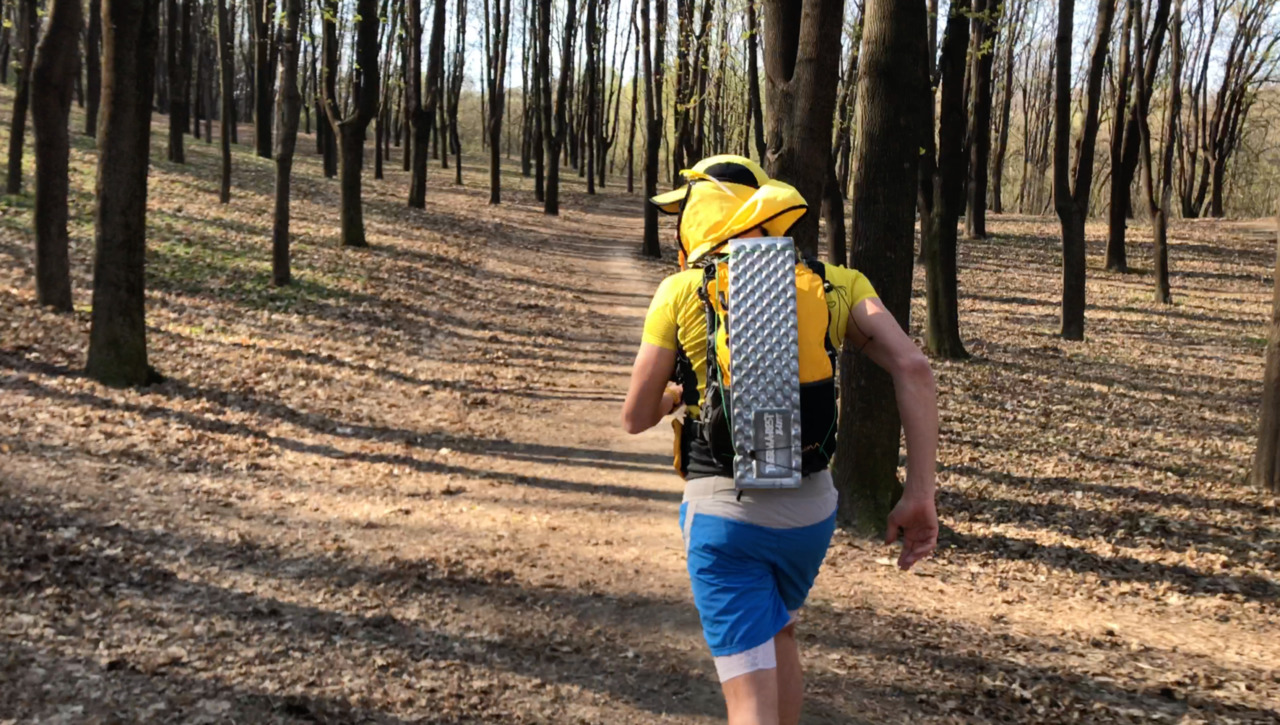
In 2017, we, Sporter (nonprofit sports organization committed to the promotion of a healthy lifestyle and the development of amateur sports in Moldova), organized the first Rubicon, an ultramarathon relay across Moldova. There I was able to test my sneakers, food, and running technique. And of course, my running performance in kilometers. Honestly, it was hard for the brain to “digest” 150 kilometers in two days. People who were aware of my plans joked: “Dimon, you’ve organized a really impressive training for yourself before the MDS — hundreds of people, hundreds of kilometers, hundreds of thousands of lei…” :)
Let them joke, but seriously — I have a dream to organize an iconic Moldavian race like Marathon des Sables or Comrades in South Africa. And I think we’ll do it.
Things to take to the desert with you
The organizers of the Marathon des Sables have outlined a set of necessities for a desert runner: a backpack, a sleeping bag, a torch with spare batteries, 10 pins, a compass, a lighter, a whistle, a knife, disinfectant, a venom extractor pump kit, a mirror, a space blanket, sun screen, 200 Euros, a passport, a medical certificate, ECG tracing and food for seven days (14,000 kcal).
These are not mere recommendations — these are absolutely indispensable things. Here is the list of penalties for failure to comply with the requirements:
— No medical certificate and/or ECG tracing while motionless — 200 Euros + one hour of penalty for each paper;
— No backpack — disqualification;
— No sleeping bag or compass — three penalty hours;
— No signal pistol, road book, salt tablet, food (in an amount of 2,000 kcal per day) or space blanket — two penalty hours for each;
— No 10 pins, knife with a metal blade, whistle, antiseptic medicine, mirror, syringe with anti-venom, torch with batteries, check-in card, lighter, sun screen, money (200 Euros) — one penalty hour for each;
— Non-compliant backpack weight (must be between 6.5 and 15 kg) — one penalty hour;
— Absence of any item of individual equipment — 30 penalty minutes.
“Basically, hardly any runner can get into the MDS with no penalties.” — Me
The particular choice of obligatory and personal items depends on the individual preferences of the runner, so that is left to your personal consideration. Some athletes try to save money and stay hungry, others take more food and comfortable clothing and end up hating their heavy backpacks.
I spent several months trying to define the list of things I’m taking with me. Finally I managed to put together the list of items with their weight in grams. Looks quite thought-through but in the long run only distance would reveal how well I’d managed.
Obligatory items (612 g)
— A compass (24 g) — so that I don’t get lost;
— A knife (4 g) — to defend from the Berbers;
— A torch + three batteries (113 g) — to keep running at night-time;
— A whistle (4 g) — to whistle tunes while running;
— A space blanket (47 g) — to warm up or cool down;
— 10 pins (4 g) — to pin up the number;
— Sunscreen (23 g) — so that I don’t turn into a charcoal;
— A mirror (10 g) — to signal to a helicopter pilot;
— Venom extractor pump kit (29 g) — to deal with snakes;
— A passport (15 g) — so that they knew whose body they found;
— 200 Euros (1 g) — to stay in a 5-star hotel on the way;
— A national flag of Moldova (50 g) — will help me not give up;
— A lighter (11 g) — to cook my food;
— Disinfectant (37 g) — to lick my wounds.
Also one should take into account that before the start you’re going to get a whole bunch of things that you’ll have to carry with you:
— A road map with the race route (42 g) — they give it to runners the day before the start. I don’t even imagine why would they keep it secret;
— SPOT Gen3 satellite tracker (113 g) — so that they could see the location of each runner;
— A chip (20 g) — to fix down the time of each stage;
— Salt tablets (25 g) — to maintain salt balance under conditions of dehydration;
— Toilet bags (30 g);
— BIB number tags (10 g) — one for the chest and one for the back.
Washing (90 grams)
Participants of the race usually take with them the following hygienic belongings: soap, wet wipes, toilet paper, antibacterial liquids, dry shampoo, a toothbrush, toothpaste, and a towel. In general, I’m an ogre13 by nature, so I’m pleased with the prospect of not washing for a week. I decided to take only toilet paper (90 grams).
Sleeping (642 grams)
I noticed that training is successful if you have a good night’s sleep before it. Even if I don’t eat, even if I’m not in a good mood, and even if it’s raining.
Sleep is the main thing for refreshment. I want to sleep long and tight when I’m in the desert, so I take with me a sleeping bag, a mat, and earplugs. Some take a pillow as well. I decided to save 100 grams on this and I’ll put a backpack under my head.
It took me a long time to choose a sleeping bag. There are many ultra-light sleeping bags with cool down on the market now. There is also another interesting option — a pair: a waistcoat plus a pocket for your legs. I scratched my head and chose an optimal combination of weight, volume, and cold-resistant properties, taking into account the expected +5°C at night — Minimus Down Sleeping Bag, K Series (372 grams).
Sometimes I climb mountains and take inflatable mats. Honestly, they are uncomfortable, creaky, narrow, and even unreliable — a spark can make a hole. It takes a long time to inflate and blow them up. Therefore, I decided to take a sleeping mat (a foam mat) to the race. Therm-a-Rest Z-Lite (270 grams) is the coolest and lightest mat.
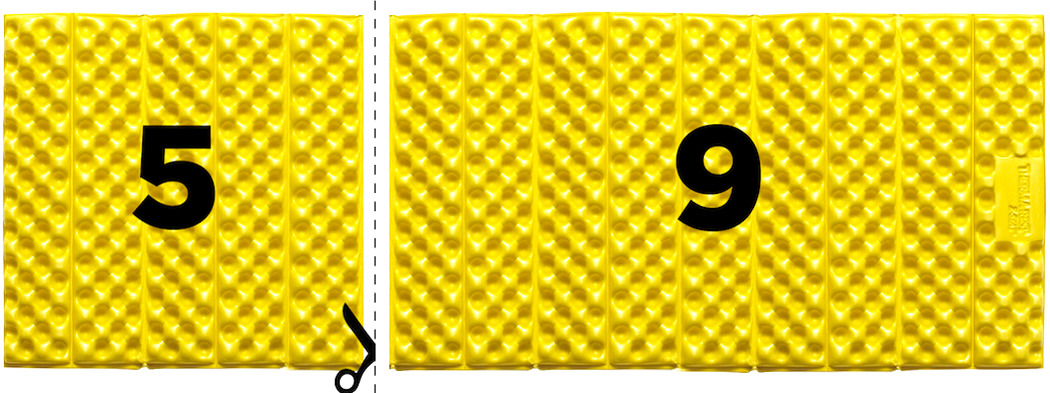
To save weight, I cut off one third of the mat. My feet can lie on the ground, as the main thing is that my bottom feels soft.
Clothing (2579 grams)
The most important thing here is a backpack.
A lot depends on it. Fortunately, I didn’t have to rack my brains for a long time and took a 20-liter WAA MDS ULTRABAG (1086 grams). More than half of the people run with it at the Marathon des Sables. It’s such a proven workhorse.
I only cut off unnecessary straps, ropes, hooks
and rubber bands — in total, more than 200 grams of excess weight. The final weight of the backpack was a little more than a kilogram.
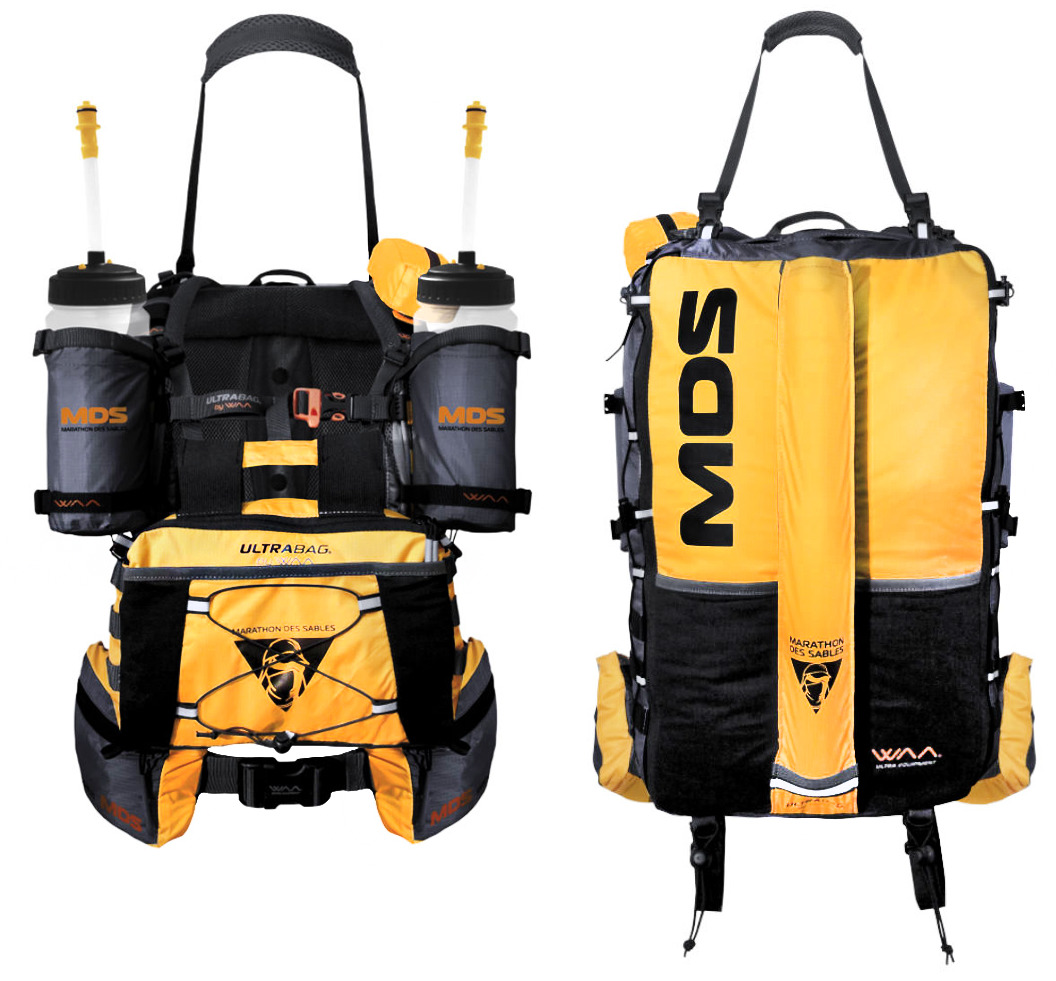
The second most important item is sneakers. Well, this is my favorite pastime: to buy, run, become sad, and give away. I did so three times before I decided on the design and size. I chose Hoka Challenger ATR 3 (a pair is 660 grams).
I took one and a half centimeters bigger than my usual size. After all, it’s known that the main trouble for runners at the Sand Marathon is calluses. 90 percent of participants get them. The formula is very simple: heat + sweat + friction = calluses. Moreover, if some sand gets into your sneakers, you’ll have to throw away your feet.
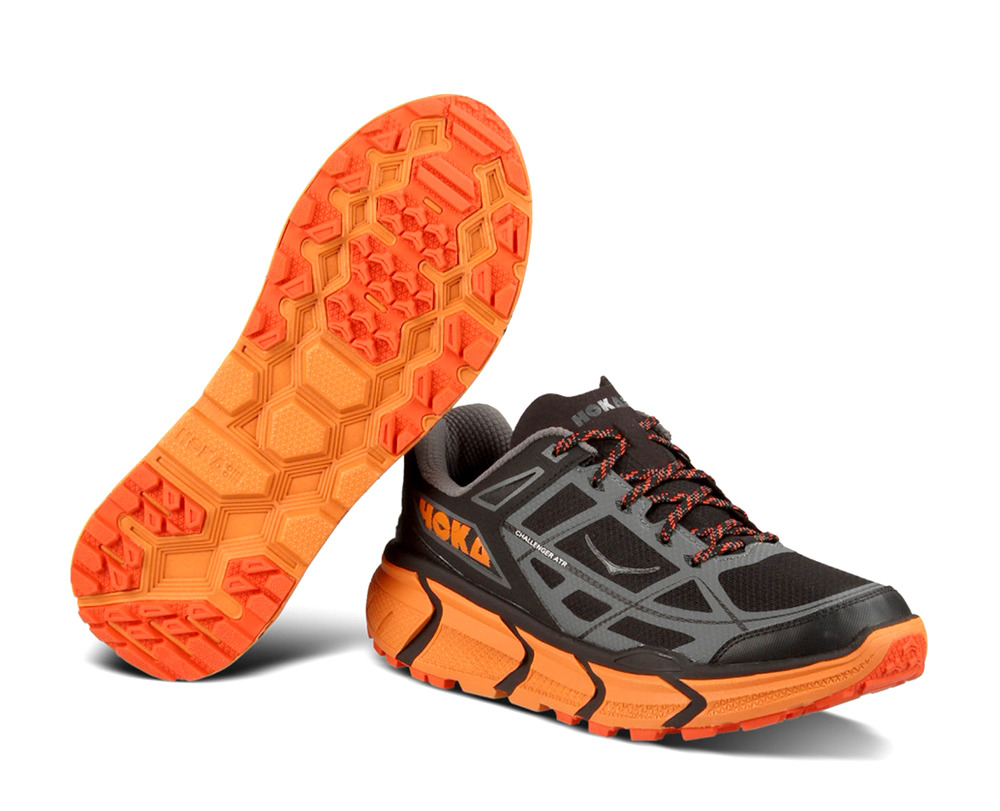
To avoid getting sand into your shoes, gaiters, shoe covers with a hook and loop fastener, can be used. The hook and loop fastener is sewn to the sneaker and to the gaiter.
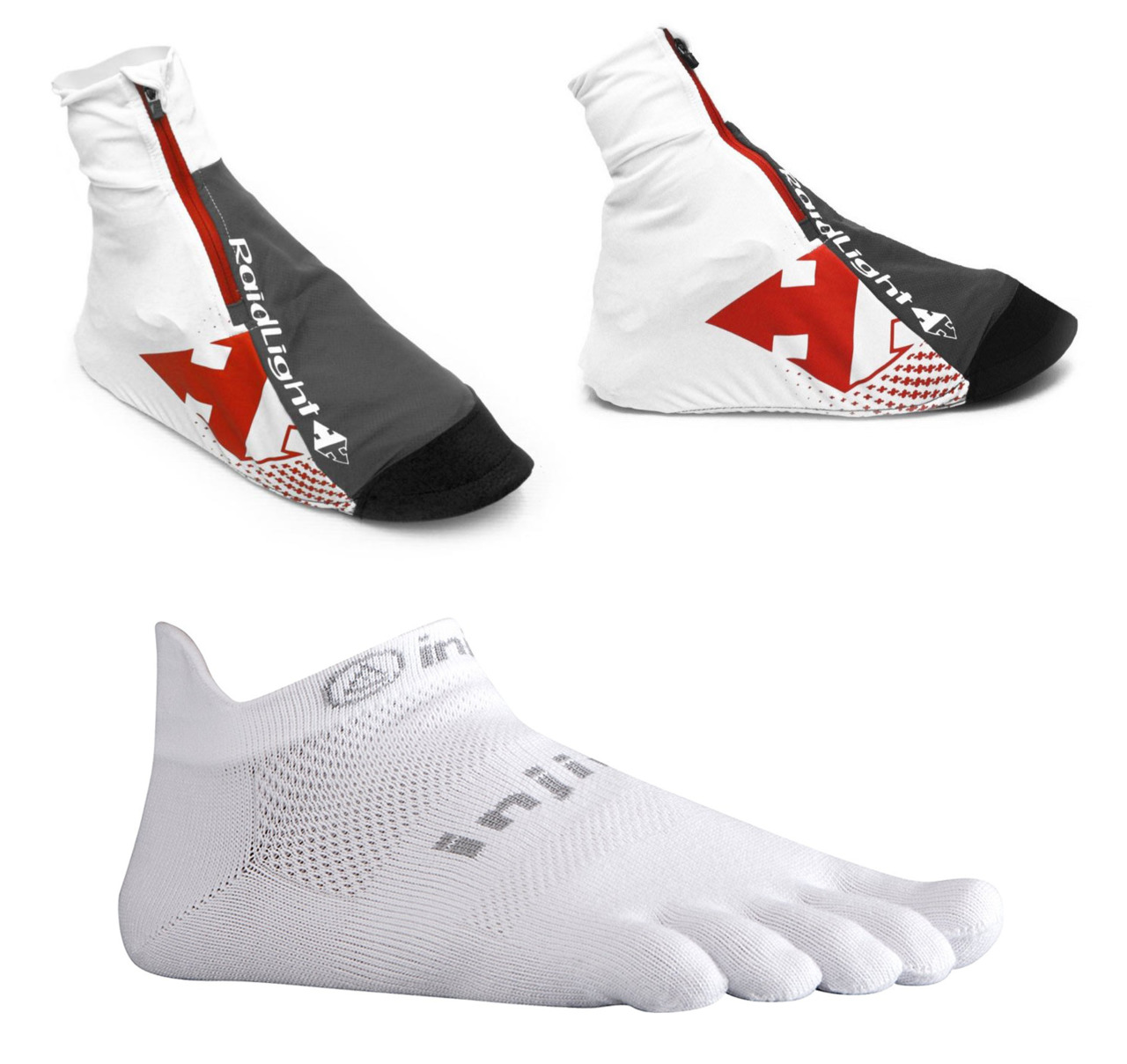
Wear them and you can safely run in the sand.
I chose RaidLight Desert Gaiters (76 grams): they are light and don’t rub. It’s very important to choose the right socks. Fivefingers prevent friction between the toes and help to save your feet. Before the MDS, I ran a marathon in Injinji (32 grams) and didn’t rub anything.
There is another strange technology for protecting the skin of the feet — tanning.
Yes, legs are tanned like a leather jacket. There is a simple recipe: make baths with lemon juice every day for a month before the race. The skin coarsens and becomes resistant to rubbing. It’s in theory. In practice, the same 90 percent suffer from calluses. I think they all tried to save their feet, and many of them with the help of tanning.
As for me, I don’t mind a couple of calluses. This will allow me to fully experience the desert and to suffer a little, as I love…
On my head, I wear a light Salomon Cap XA + Cap ear-flapped hat (95 grams) with neck protection from the sun. Sunglasses (30 grams) are for the same purpose. On my body, I wear my favorite Waa Ultra Carrier Shirt (174 grams) and comfortable Salomon S-Lab Exo Twinskin shorts (142 grams).
I have in my backpack a woolen shirt with long sleeves (205 grams) to keep warm at night, spare socks (39 grams), and weightless slippers (40 gramms) from the hotel to walk around the camp.
Treatment (78 grams)
The first-aid kit weighs a little, but everything depends on it. Therefore, I try to foresee any surprises (it doesn’t hurt to dream).
The first-aid kit includes:
— Loperamide — against upset stomach;
— Ketanov — against pain;
— Nurofen — against inflammation;
— Persen — against insomnia;
— Compeed plasters;
— Alcohol for disinfection;
— Tape for knees;
— Sunscreen.
The “medical block” includes a mandatory doctor’s certificate, assuring the organizers that the runner will not kick the bucket at the first stage. I’m always astonished at the bravery of doctors signing such papers. Organizers also doubt the adequacy of Aesculapians, so they always require a cardiogram (and from old fellows like me — a cardiogram under load).
Charging (810 grams)
Well, how to go without devices? After all, it’s not for nothing that I graduated from polytechnics and I love all these pieces of metal. But...all these things weigh a lot, so I take only the most important.
The phone is not the most important thing, because there is no coverage in the desert and the iPhone turns into a pretty toy. Therefore, it will wait for me at the finish.
However, a Garmin Fenix 3 (82 grams) watch will run with me. I decided to shoot this six-day torture on GoPro HERO 5 Black camera (117 grams) in 4K mode, and later I will make pictures from the video. In addition, on a trial basis, I took with me a Garmin inReach Explorer + ® satellite messenger (213 grams). It allows communication with the family, calming the wife with the message “I’m still alive!” after each stage. By the way, this piece of hardware sends the host’s coordinates via space to a server every 10 minutes. And voila, you can see exactly where I’m crawling through the desert.
All this gear should be recharged. Therefore, I had to take a SunnyBAG LEAF + solar panel with a power bank (348 grams) as well as various cables and adapters (50 grams).
Many people take headphones and iPods. I firmly stand against headphones with music, audiobooks, podcasts, and other informational noise during the run. We are already overwhelmed with news, music, social networks, messages, videos, jokes, pictures, memes, calls, notifications, TV flickering, radio mumbling, and other trifles. During training, at least one hour a day, you enjoy the silence and the opportunity to listen to yourself and your body.
“Feet, how are you there?”
“Very well, Commander! Thanks for the new sneakers.”
“And you, dear heart, how are you?”
“I’m beating little by little…,” my heart answers out of breath, “Can we slow down?”
“Ok, we can, we will reach the hill and have a rest.”
Here the brain intervenes:
“Look! You’ve been thinking recently about the medals for the Triathlon. Here’s a solution — make them black, it will be unusual.”
“Yes, that’s a great idea, thank you.”
“No problem! Anytime!”
I don’t know about other people, but I get many ideas while running. The brain, cleared of debris, can calmly put everything in its place and then give an answer. A week in silence in the desert! This is real mental purification!
It’s true happiness to run hundreds of kilometers, get calluses, starve, overheat, freeze, feel the taste of water, gobble up a scorpion, and look at the stars! And most importantly, it’s great to be alone with yourself and finally turn off all these other people’s voices in your head.
Cooking (206 grams)
Everything is very simple here: you eat what you take. To prepare food, I took a MSR Titan Tea Kettle 850 ml saucepan with a lid (130 grams), a Lifeventure Titanium Mug 450 ml (55 grams), a spoon-fork (10 grams), a lighter (11 grams), and… that’s all. A gas stove is prohibited due to the high temperature in the desert.

There are two popular ways of warming up water in the desert:
— Alcohol tablets. I turned down this idea because an experiment showed that at least six tablets should be used at a time. If I have to cook 12 times for the whole marathon (twice a day), I need 72 tablets. That’s a considerable weight, so brushed away this idea;
— Twigs, sticks. It’s all very simple! You run to the camp and look for combustible material, twigs and sticks, which were not found by other runners and local berbers. The berbers are guys who are as sly as a fox, as they will sell a bundle of brushwood for 50 Euros! Here an athlete takes a risk — a backpack without provisional fuel reserves is 300 grams lighter, but then you have to eat cold food. Competition for wood fuel is high in the desert. I decided to take a chance.
As a third point, I would like to offer you an MDS lifehack: another option of making a fire — to warm the water by burning friends’ letters, which the organizers of the competition print on paper. During the marathon, letters can be sent to:
http://live.marathondessables.com
The letters warm all the senses!
So, the total weight of my backpack without food and water is 3400 grams. Clothes and shoes on me weigh 1300 grams.
Food reserve (3400 grams)
It’s even hard to call it food during the race. The main thing in the diet during the competition is not the taste, but the ratio of proteins, carbohydrates, fats, and weight. Organizers regulate the number of kilocalories — 14,000 per race. Not less. More is allowed.
It’s strange: only 2,000 calories a day. We burn 4,000 kcal per day during an ultramarathon. And what about the heat?
The sand? The backpack? If my experienced comrades hadn’t given me good advice, I would have taken a minimum of 4,000 for a day. But experienced people say that 2,000 is usually enough.
Six months before the competition, I began experimenting with sublimatedfood containing no moisture. Dry powder. Dust. But if you add water — mmmm… It turns out delicious. In the world there are many manufacturers of sublimates, so I tasted five options and stopped at MX3 — the food is quality, sometimes even tasty.
The price is about 6 Euros per serving. I bought 20 different dishes, tasted them, chose the best ones during the Rubicon, and ordered them again.

As one member of the MDS said:
“The main thing in the diet at the race is diversity.”
Dmitry Erokhin, participant of the MDS
So I’ll have two new dishes every day. I decided to fill the intervals between breakfast and dinner with nuts and dried fruits: they are high in calories and don’t take up much space. Moreover, every day, I’ll take 50 grams of pure carbohydrates for a quick recovery after running. Plus, tea with sugar to while away long evenings.
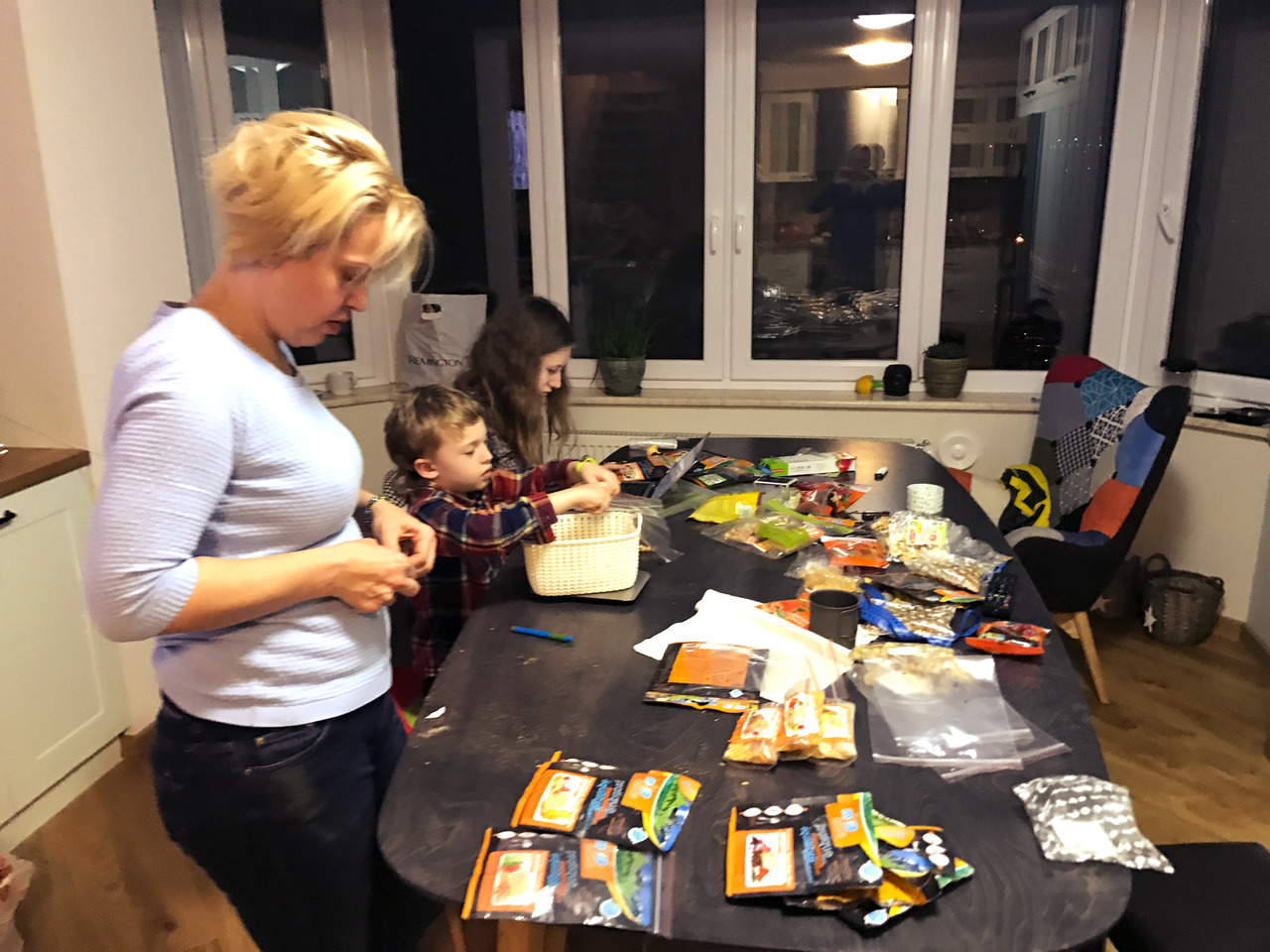
In short, I decided to take a risk and took food containing precisely 14,000 kilocalories for seven days of competition. If it’s not enough, I’ll have to eat sand and speak well of my experienced comrades.
While packing my things at home, continuing to struggle with excess weight, my family and I poured the sublimates out from heavy foil packs into cellophane zip bags, then sorted and packaged dried fruits by weight.
The savings amounted to 250 grams. Reduced weight and volume — this is good, but the fact that I have to wash the saucepan every time is not good.
So, my whole food weighs 3,400 grams, in average 410 kilocalories per 100 grams. Not bad. My backpack without water weighs about seven kilograms, with water — eight and a half. Not very hard. But it is to the detriment of comfort. I hope I won’t envy my provident friends.
The acclimatization or a week in Morocco
Backpack is stuffed. I’ve gone through all the necessary trainings and studied all the info. Mental state is just fine. Feet are ready to go. I reassured my family of my safety and asked all my friends to cheer for me. Here comes the day of departure.
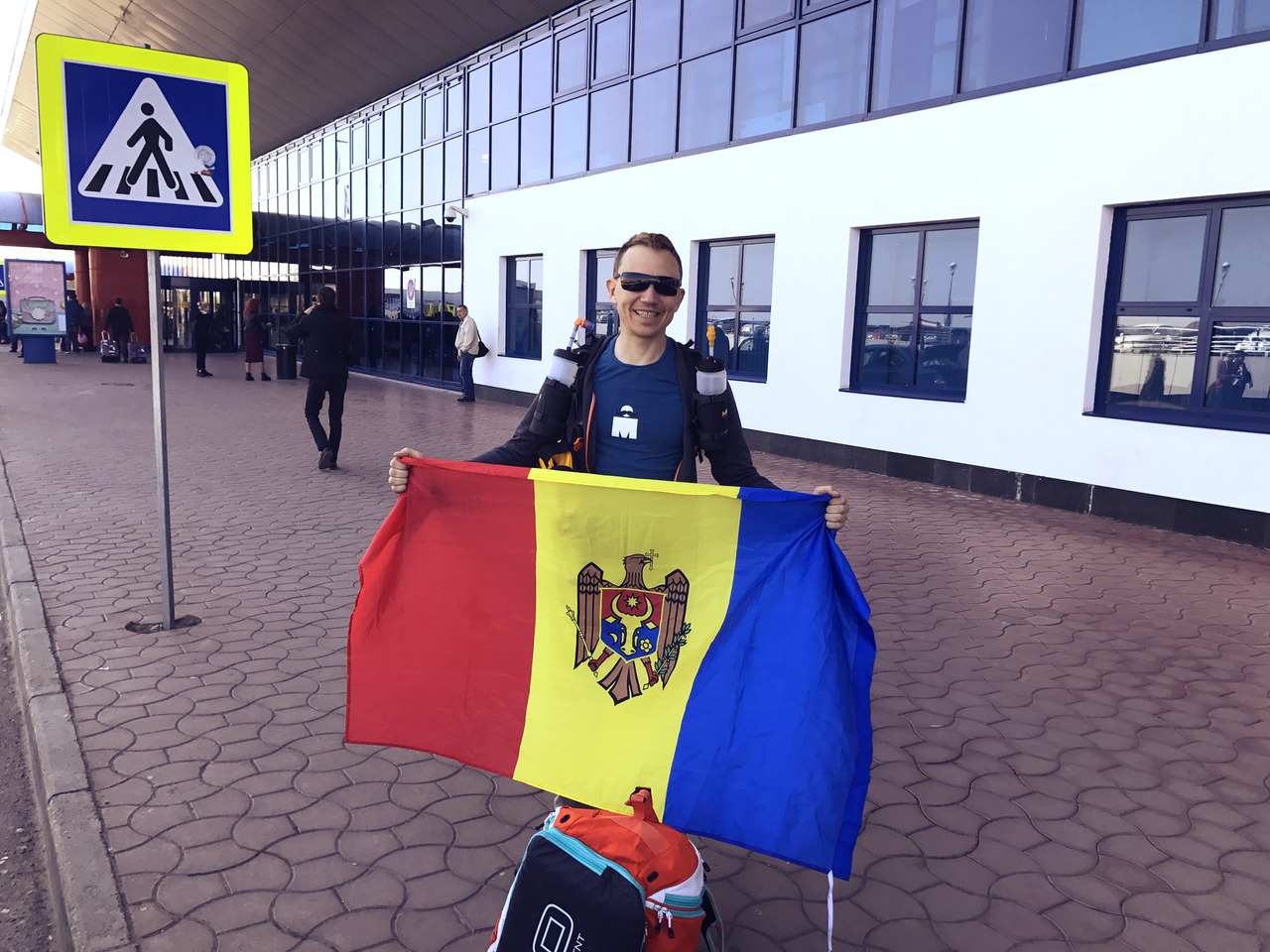
Morning in Chisinau. Alarm. Pants on. A banana. Bag on the shoulder. Lots of hugs and kisses. Padremobile to the airport. Then the plane: Rome, Casablanca, Marrakech.
Upon arrival I had to wait for an hour in a queue. Finally I left the airport and my lungs took in the hot air of the Morocco night. Half an hour later I was already snoring in my hotel.
My first morning in Marrakech was boiling hot. I crawled down for breakfast and met my future “roommates’ — Pafnutiy (= Pavel, Pasha, Pashka etc.) and Jurasic. They had already been here for 2 days fighting the heat off with juice mixed with local wine, and having massages and sunbathing. My new friends quickly gave me a fill-in as to local lifestyle so soon we were smoking a hookah enjoying the sunny sky and the cool swimming pool.
Pashka’s happy voice announced that his luggage (his backpack with all the stuff) never reached Marrakech and got lost somewhere in the Mediterranean region. He seemed quite positive about it but actually there’s nothing funny.
More experienced friends warned him: keep all the important stuff with you. Shame. At least Pafnutiy has good friends, so he immediately reached out to them and they sent him all new things from Moscow. While waiting for them to arrive he borrowed something from me or from the hotel (like slippers).
Marrakech is a big and vivid part of the Arabic world so we decided to start with a walk around the city.
The city is all minarets, markets, crowds, hustle, dirt, women covered in black and men in white… Altogether it feels quite oriental and ancient.
Over the day we managed to tick off the whole list of mandatory attractions: dined on delicious lamb at the market, taught the Berbers to dress meat correctly, hugged a couple of snakes, hypnotized a fakir, rode around in a donkey carriage, wandered through solitary streets. Having completed the list we returned to the hotel.
It could have gone quite well if I hadn’t forgotten my iPhone under the Morocco sun — it clearly wasn’t its best day ever.
The next day we went for a run to check out our equipment for the MDS and our abilities to sustain the heat. The main objective was to get an idea of how fast we could run under such conditions.
Our run took us to the airport where we met two more martyrs — I mean runners. They were Iya from Russia and Vlad from Ukraine. Also Pashka had finally gotten his luggage. Based on its looks I can suggest it visited at least Chile and Sydney.
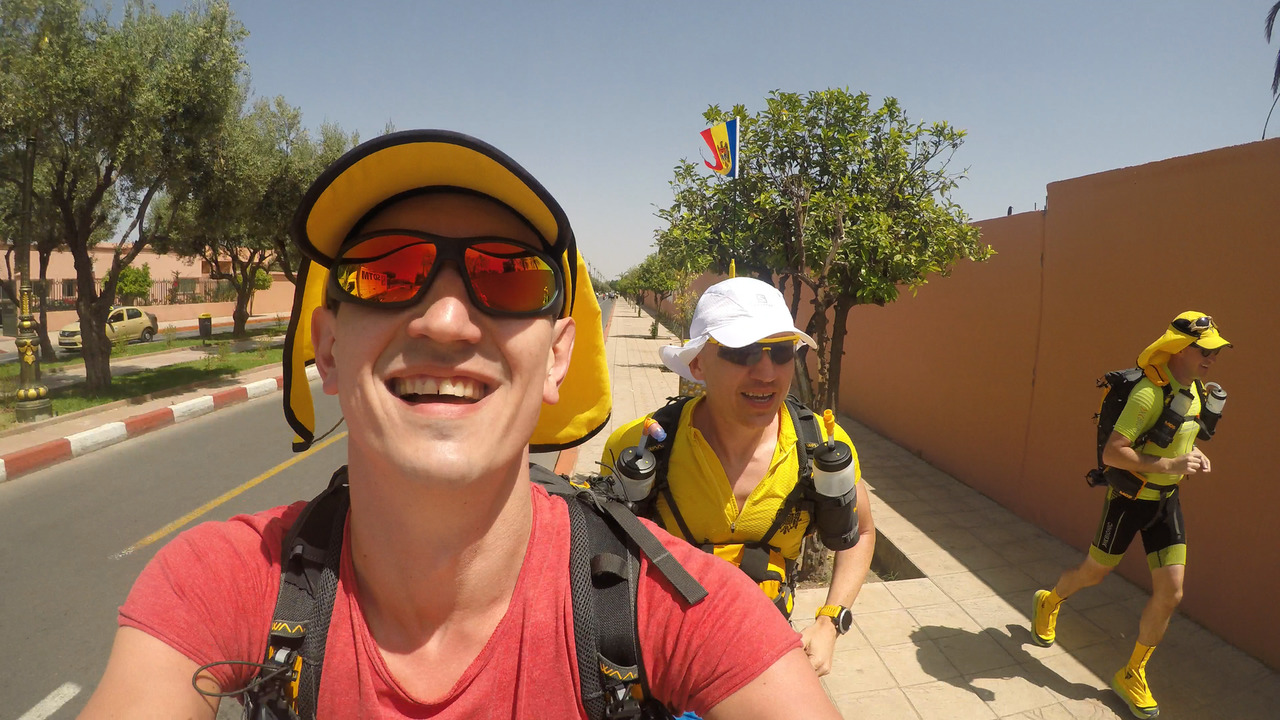
To celebrate happy morning events (and to show affection to our feet) we went for a pedicure. If only those feet knew what they were about to sustain…
The following day I inspected my backpack and carefully repacked all my food checking every calorie out of those prepared for seven days. Again I came to the conclusion that I’d go with two meals a day, one bite of nuts, and two glasses of tea (from one teabag). Eventually it turned out I was right.
Left to right: carb shake for quick recovery after running, breakfast-lunch, lunch-dinner, a bite (nuts and dried fruit), energy gels for power charge during the run, teabags and sugar. X-day is some spare food for emergencies.
Then I packed together food for the first two days and stuffed my backpack. The digits on the scales were quite a nice surprise: 6.35 kg. Just the necessary minimum, within the range of sanity. Great!
I’m almost ready — right after I shave my knees (that’s for good adhesion of tape. Now I’m good. Time for a good sleep. The next morning we all take a taxi to Ouarzazate (that’s another town in Morocco), from where we head off directly to the desert.
To The Desert!
Walking along the way bored, I decided to teach Pafnutiy a game called “Take and remember.” When your partner gives you something (bread, a spoon or the phone, for example), you should remember to say “I take and remember,” but if you forgot about this and remain silent, and your partner says, “Take and remember” — you lose.
Oooh, how bitterly I regretted later that I had let the genie out of the bottle!
I have been playing this game for thirty years and, frankly speaking, I considered myself a pro till that fateful moment. But after I caught Pashka a couple of times and he understood the gist of the game, an endless multi-day nightmare began for me.
He managed to catch me in the daytime, at night, during breakfasts, lunches and snacks, while I was collecting firewood, cleaning calluses, and even in the toilet. He bothered me when I was sleepy, dirty, hungry, tired, frozen, and sunburnt. He did not forget about the game when I was approaching the finish line, barely dragging my feet, when he returned my satellite phone to me, when he gave me his last drink of water. And while doing so, he was as happy as a child when I forgot to answer him. He did everything to make me hate this game. For a long time afterwards, when I was already in Chisinau and something was given to me, I blurted out: “I take and remember.” In short, I publicly declare:
— “Pafnutiy, you’ve won! I give up!”
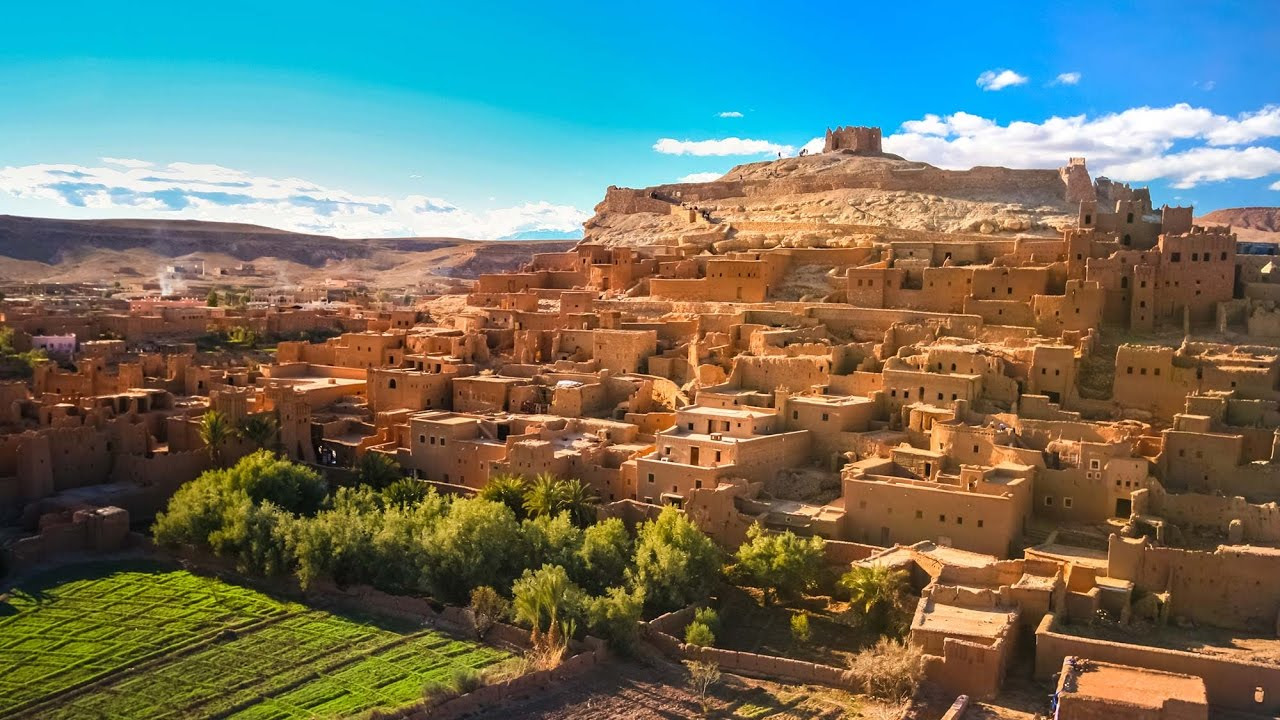
Ouarzazate is a small town on the edge of the desert. It is renowned for its Atlas Studios, one of the largest (20 hectares) studios in the world, and for the many famous films that were shot there, such as Asterix and Obelix: Mission “Cleopatra”, Game of Thrones, Gladiator, and Alexander.
They say Brad Pitt and Ridley Scott are practically locals.
In this marvelous place, we swam in the pool, ate a hearty meal, and drank wine for the last time, while morally preparing for a hard week away from civilization.
In general, I recommend to all who are going to the MDS to spend a week in Morocco and have a great time there before the race.
And one case that occurred in Ouarzazate was succinctly reported by Vlad Tislenko as follows:
Dima is not called Moldavian Bear Grylls for nothing — he ate a huge bug in front of my eyes with the comment: “I hope there are a lot of them in the desert, I won’t have to starve.”
— Vlad Tislenko
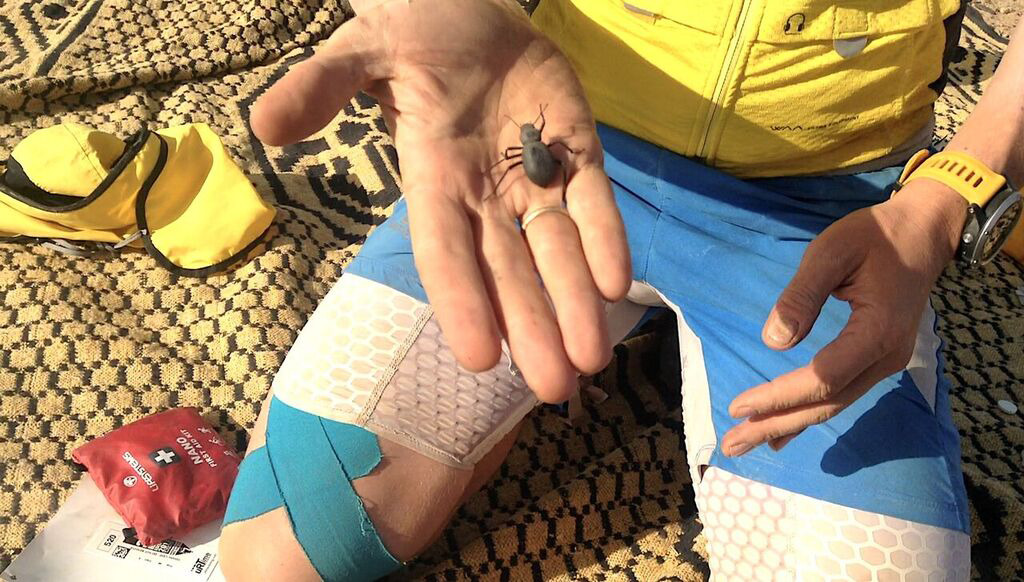
…I admit, I did it. And yes, I can crunch up a bug. As my mood takes me. But if I had known what the consequences of this snack would be, I would have steered clear of this insect…
To the desert!
The next morning, we humped our backpacks on our backs and went to the buses, which were to take us to the desert. Finally…
In the bus we were given road books, where every stage of the race was detailed: maps, coordinates, gain in altitude, schedule, penalties, and everything else.
To everyone’s disappointment, this year the total race distance was reduced to 237 kilometers. And the long stage amounted to “just” 86.5 kilometers. In past years the race was 250 with a long stage of 91 kilometers.
In addition, we were given a registration form and “brownbags” for the toilet.
We had to stop from time to time so that the future desert ships could eat and go to the toilet. Embarrassed, people went a hundred meters away from the road, shyly hiding in the lonely bushes. Oh, if we had known then that this distance would be reduced to one meter on our return…
We were moving slowly, and the trip took us six hours. Finally we reached our goal. The first MDS location, from where we would start tomorrow.
We are met by Berbers, and they perform a strange dance.
We join them and immensely amuse the locals by shaking our bones in a no-less-the-strange manner to one of our popular songs.
УA small queue formed at the registration tent where we have our passport checked and receive a number of a camping tent. Russians, Moldovans, Ukrainians, and Estonians are accommodated in bivouacs with numbers 25, 26, and 27.
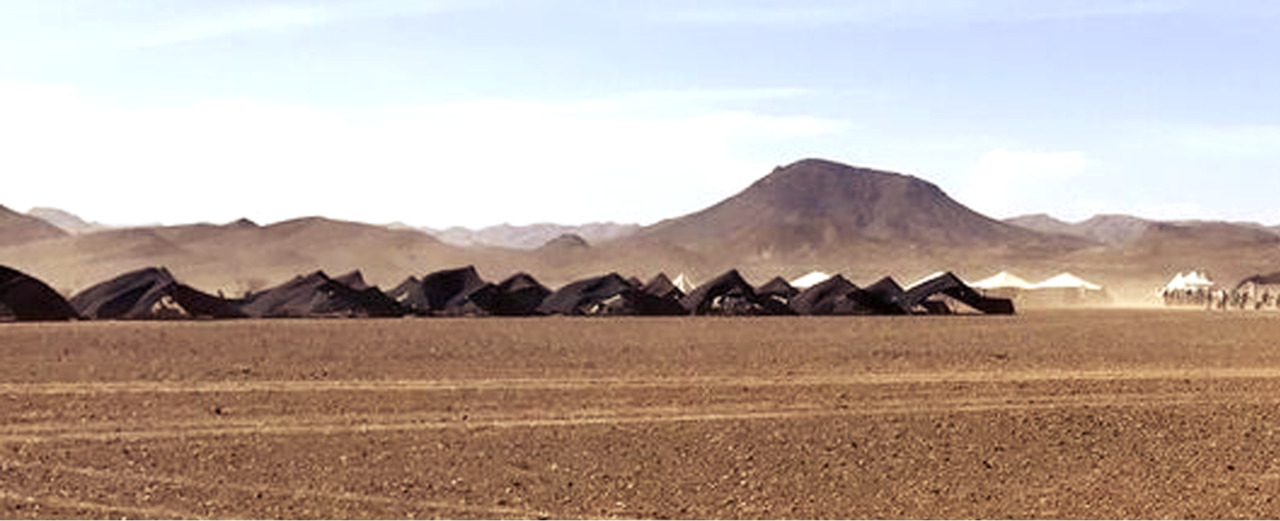
And now we enter the camp… It’s quite the size! The camp is structured as follows: a huge “three-layer” circle of bivouacs for the participants. The tents of the organizers, medical staff, water dispensing tents, and an information desk with the results stand a ways apart. There is also a dining room for normal people. And certainly the indispensible finish arch.
The bivouacs are black, Berber’s tents standing on spacers. Inside the floors are covered with camel-chewed carpets.
We arrived first, and as the saying goes, the early bird catches the worm. We occupy the best places — at the wall.
And, of course, I immediately marked our bivouac with a Moldavian flag. After all, Moldavians (MD’s) are at the MDS for the first time!
Each person was provided with about two square meters. And, frankly speaking, the next week was very comfortable for me to live in this tiny area under one roof with virtual strangers, sharing food, water, satellite phones, chargers, clothes, plasters, jokes, and letters with them.
These symbolic two square meters show how fleeting our life is, how unimportant your villa’s size is or the number of hectares your manufacturing plant occupies, because sooner or later you will return to these two square meters — and you won’t need more.
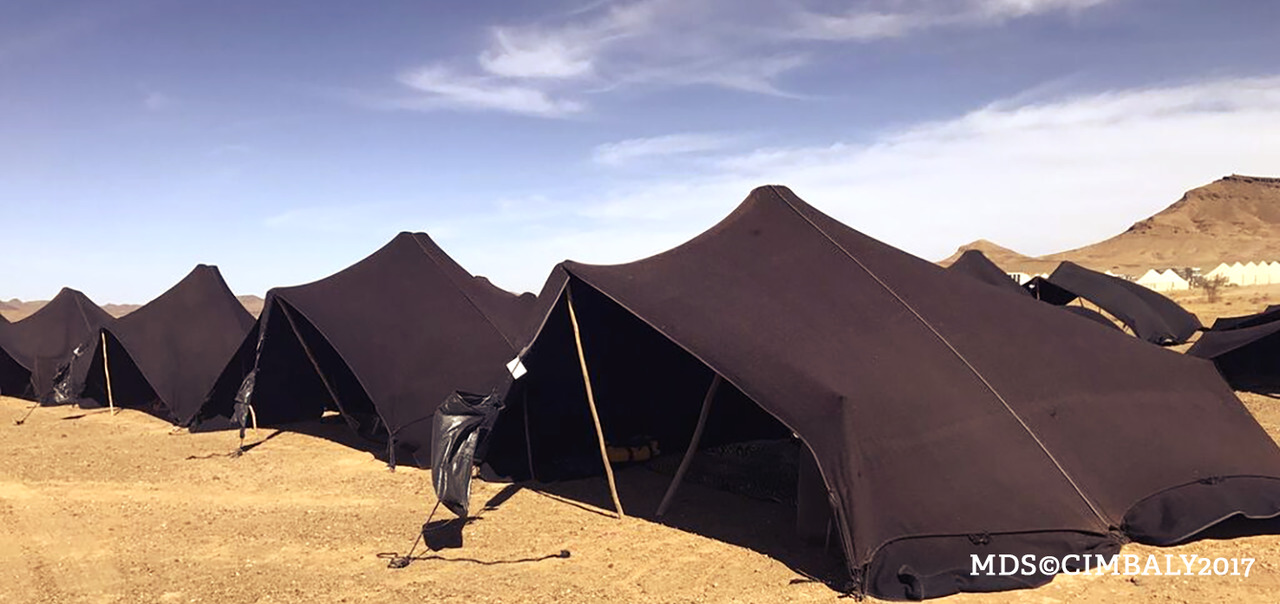
Бесплатный фрагмент закончился.
Купите книгу, чтобы продолжить чтение.
